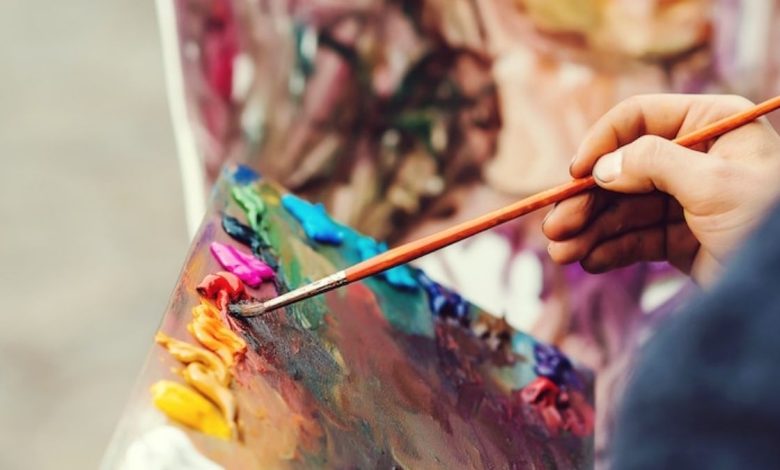Art Gifts that Can Describe Our Emotions

When you want to present a person with a special gift to describe your emotions, artwork may be your solution. Original artwork will still be treasured long after it has been received. Usually, if you present someone with a personalized work of art, the emotion you want to convey is clear.
Although you can convey a “message” with any painting, personalized paintings are believed to be the ideal way of describing your emotions with art. In this article, we’ll discuss aspects to keep in mind when you want to use a painting to describe your emotion, look at the types of personalized paintings you can use, and even give you some tips regarding creating a personalized painting.
Aspects to Remember When describing Emotions with Artwork
There are some essential aspects to remember when you want to give a work of art as a gift with the idea that the work of art should describe your emotions. First, the theory that paintings express the artist’s emotions is a concept of Romanticism of the 19th century. Before the 1900s, paintings and other works of art were considered a representation of reality. In other words, it can be said that emotion can only be described with paintings created during and after the Romantic period.
It is widely accepted nowadays that “modern” artwork gifts can evoke and convey emotions. It is “natural” to experience positive emotions such as joy and pleasure when you look at paintings. But you can also experience negative emotions like fear, anger, or disgust if you don’t like the artwork you’re looking at. Furthermore, the emotion the recipient of the gift experience is not necessarily the same emotion you experience when you look at the work of art. Thus, when you present someone with a gift to describe your emotion, there might be the possibility that the message will be misinterpreted.
But with this said, we have to emphasize that there are “universal” connections between artworks and emotions. Famous examples include Edvard Munch’s painting “The Scream”, which expresses anxiety, and Ravel’s “Pavane for a Dead Infanta”, which expresses the sadness of mourning.
What is a “Safe” Type of Painting to Use as a Gift Describing Emotion?
To ensure that the receiver of your gift “reads” the emotion you want to convey correctly, it is best to present the person with a “paint my life” personalized portrait about something you’ve experienced together in real life. By giving a custom painting of a specific event or action as a gift to a person, you emphasize the emotion you two have shared. The gift is then describing your emotion.
For example, you can get a portrait artist to paint your vows spoken on your wedding day as part of your “My Painted Life” portfolio. To give this Painting to your spouse after a few years of marriage will describe your emotions again – symbolizing that your emotions on your wedding day and your emotions now are still the same. The Painting with the vows can be hung on a wall in your home to bring those heartfelt messages of love into your home forever.
For instance, a special personalized gift for your mother could be a painting of one of her handwritten recipes. By presenting her with such a painting, you describe your love and appreciation when you think of her. You are using the Painting to describe your emotions.
More Ideas on How to Use “My Life Paintings” to Describe Emotion
A safe way to ensure that the recipient of the gift interprets your emotions correctly is to present the person with a “My Life Painting” depicting a situation where you two have previously shared the same emotions. For example, giving the person a portrait painting of the place where you’ve been together, and if possible, making you and the other person part of the painting, will describe your current emotions.
An example of such a shared emotion of fun and excitement might be the romantic ski holiday you had a few years ago. To evoke the same emotions again, you can commission a portrait painter to depict this special person skiing. Presenting such a “Paint My Life” gift to your partner describes your emotion again.
Sometimes a custom portrait drawing or Painting depicting you and the receiver of the gift doing something together you both have liked can be the ideal “vehicle” to convey your emotion when you are with this person.
How to Create a “Paint my Life Portrait” to Present as Gifts Conveying Emotions
To create paint my life portrait paintings, there is an easy procedure to follow.
Decide on the Emotion
Decide what emotion you want to describe. Then take time to decide the best subject of the Painting to describe your emotion. You have to remember that you want to describe your emotion but that the recipient must be able to “read” the emotion correctly.
Therefore try to determine what should be in the Painting that would evoke the same emotion in the recipient as in you.
Get Relevant Photos and Digital Images Ready
When you’ve decided what you want to be depicted in your Painting, get relevant photos and digital images regarding the subject ready. Remember, you don’t want a “Photoshop” photo or print – you need an original and unique painting. The portrait painter must only use the pictures as a guideline.
Therefore, find pictures of everything you need to be in the painting, and submit them all to the painter you’re using. The more pictures the painter receives, the better the portrait can be painted.
Find a Reputable Custom Portrait Painter
The best is finding an art gallery online specializing in photo portrait painting. Read what other clients have said about the studio’s work and, if possible, contact a few previous clients. If you are satisfied with the feedback, contact the studio to discuss what you want in your painting.
Conclusion
“My painted life” custom portrait paintings will always be welcomed gifts, and they will describe your emotions towards the receivers of the gifts. In addition, personalized works of art depicting situations where you and the receiver of the gift have shared certain emotions are ideal gifts to remind both of you of your emotions at that time.



